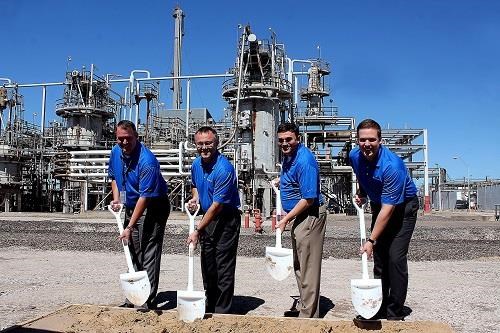The State of the U.S. Plastics Industry Is Strong
Shale gas, reshoring and trade helped the U.S. plastics industry outpace the broader manufacturing sector over the last year.
Apparent consumption of plastics (shipments + imports – exports), which has grown five years in a row, set a record for a fourth year in a row in the U.S., highlighting a new report on the industry released by SPI. Bill Carteaux, SPI president and CEO, and Michal Taylor, vice president of International Affairs and Trade, reviewed two reports outlining the state of plastics: Global Business Trends and Size and Impact of the U.S. Plastics Industry.
As a show of the sector’s strength, plastics apparent consumption grew by more than 6 percent to $298.3 billion. Other highlights:
Exports rose more than 3 percent and imports rose nearly 8 percent.
The plastics industry is the third largest manufacturing sector in the U.S., employing 939,855 with facilities in every state
Carteaux and Taylor spoke at length regarding the unique cost advantage the U.S. currently enjoys in commodity resins like polyethylene and polypropylene thanks to shale gas. Around 85 percent of polyolefins in North America are derived from natural gas sourced ethane, which is enjoying a sizable cost advantage due to shale exploitation over petroleum-sourced naphtha.
“The low cost of natural gas and, to a lesser extent, oil in the U.S. has driven down the cost of doing business here, and made the country more competitive in the production of chemicals and resins,” Carteaux said. (Read more about shale gas driving U.S. investment here from my colleague, Lilli Sherman).
Reshoring of work, particularly projects being pushed by Wal-Mart and others for a Made-In-America sourcing, continues to have an impact in plastics. Carteaux told the anecdote of one SPI member’s bid to bring some manufacturing back, also noting how many groundbreakings and expansions he’s attended over the last year.
“Ten years ago, this member moved a large project to China, and just recently, moved the business back to U.S. in part because Walmart asked,” Carteaux said. “The interesting thing is that costs are actually lower in the U.S. now than they were in China. In the next 12 months or so, I think we’re going to see more reshoring ramp up.”
Other highlights from the reports:
Productivity gains in plastics outpaced other manufacturing sectors by 2.2%
Captive plastics producers had the largest share of employment 21.9%
Texas overtook California as the largest employer by number
Indiana is the largest employer by concentration (employees per 1000 non-farm jobs)
The U.S, thanks to resin exports, enjoys a $10.4 billion trade plus
Top export markets (in order): Mexico, Canada, China, Belgium, Brazil
Mold exports grew 10.3%, expanding while machinery, products and resin contracted
(Pictured: Braskem officials break ground on a new UHMWPE plant in La Porte, Texas.)
















